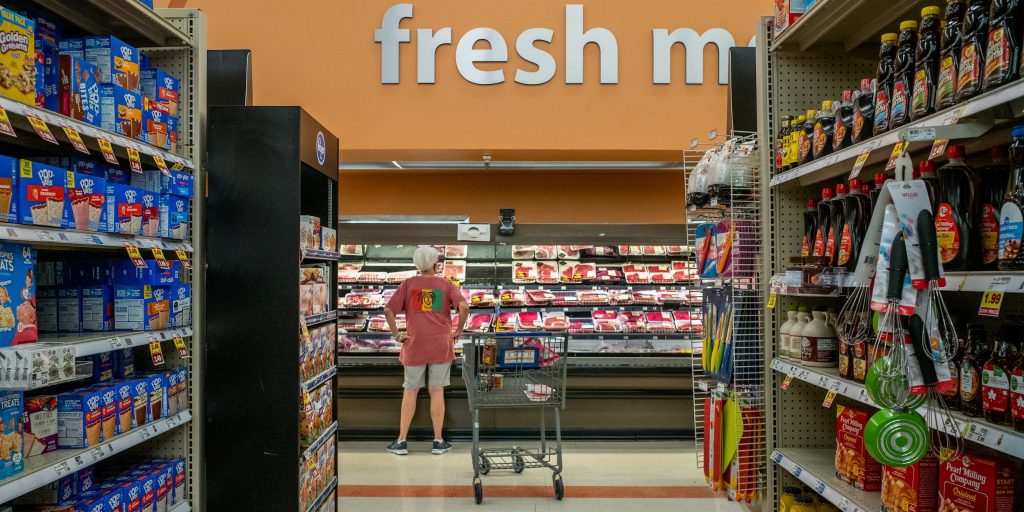- The US economy shrank in the first six months of 2022, but it's most likely still healthy.
- Back-to-back quarterly contractions signal a technical recession, but hiring and spending data show an economic recovery that's still going strong.
- The official recession definition has more stringent criteria that aren't likely being met right now.
You're going to start hearing many more people say the US is in a recession. They aren't quite right.
The US economy shrank at an annualized rate of 0.9% in the second quarter of 2022, the Commerce Department announced Thursday. The slump follows a 1.6% contraction through the first three months of the year, meaning the economy shrank during the first half of 2022.
The Thursday GDP print sounded one of the most ominous alarm bells in the economic space. Back-to-back quarters of economic contraction are widely regarded as the criterion for a technical recession, and for most of the US's downturns, the rule has matched the National Bureau of Economic Research's recession dates.
Yet the organization — which officially decides when the economy is in a downturn — has a stricter definition for a recession. Its Business Cycle Dating Committee maintains that a recession "involves a significant decline in economic activity that is spread across the economy and lasts more than a few months," according to its website. The organisation takes depth, diffusion, and duration into account, and while usually each criterion needs to be met, extreme shocks to any one of them can offset smaller moves in another.
So far, none of the three factors are particularly concerning. Not only are the quarterly contractions powered by temporary trends, other data shows the economy still rebounding from the throes of the coronavirus crash.
Companies are still hiring at an extraordinary pace
Job creation continues to outpace the pre-pandemic trend. The country added 372,000 nonfarm payrolls in June, beating economist forecasts and slowing only slightly from gains seen in May. That's nearly twice the number of jobs the US created on a monthly basis before the pandemic. Companies aren't just hiring, they're rushing to add more workers.
The economy is on the cusp of recouping the payrolls it lost at the start of the pandemic. Should the average pace of job creation hold steady, the US will surpass its pre-crisis payroll count in August, just 30 months after the start of the coronavirus crash. By comparison, it took 76 months to achieve the same feat after the 2008 financial crisis and 48 months to do so after the 2001 recession.
A recession would almost surely feature a sizeable uptick in layoffs, but the latest data shows no such bounce. Weekly filings for unemployment benefits — a popular measure for job losses — are still hovering around pre-pandemic levels following a recent swing higher. The uptrend likely reflects summer layoffs in the tech sector, but the broad trend still shows job losses still at healthy counts.
Americans are pouring loads of fuel into the economic engine
Strong consumer spending is a necessary component of healthy economic growth. It counts for about 70% of economic activity, meaning a decline would remove a major driver of the US's rebound.
Luckily, spending is still running strong.
Americans spent a record $681 billion at retailers and restaurants in June, the Census Bureau said earlier in July. The gain was somewhat fueled by higher prices as sky-high inflation continues to slam Americans finances. But even after accounting for price growth, spending only slightly eased.
That's a good sign for today's economy. Inflation — which is running at the hottest pace since 1981 — has largely been powered by historically strong demand and insufficient supply. The supply side of the problem is slowly improving, and while demand is starting to waver, it has a way to fall before flashing any warning signs.
Retail sales have run above the pre-pandemic trend for nearly two years, boosted by last year's economic reopening and about $5 trillion in government stimulus. As such, there's some room for spending to cool off without pulling the economy into a downturn.
Even the dismal second quarter GDP report showed spending still growing, albeit at a slower pace. Personal consumption expenditures, which make up around 2/3 of the overall economy, grew at an inflation-adjusted 1.0% annualized rate during the spring.
For now, Americans are still going out and spending much more than they did before the pandemic, even after adjusting for higher prices. Unless spending unexpectedly plummets, shoppers' resilient demand is likely to keep the US far from a recession.
